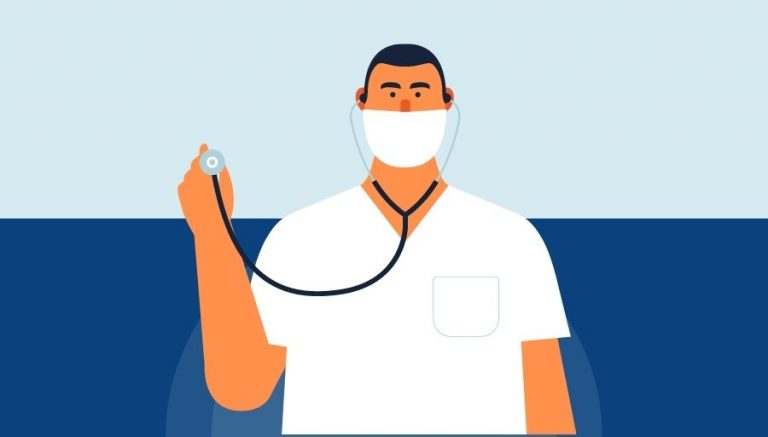How To Use CPT Code 95806
CPT 95806 is a code used for unattended sleep studies that simultaneously record heart rate, oxygen saturation, respiratory airflow, and respiratory effort. This article will cover the description, procedure, qualifying circumstances, usage, documentation requirements, billing guidelines, historical information, similar codes, and examples of CPT 95806.
1. What is CPT 95806?
CPT 95806 is a medical billing code used for unattended sleep studies that involve the simultaneous recording of various parameters, such as heart rate, oxygen saturation, respiratory airflow, and respiratory effort (e.g., thoracoabdominal movement). These studies are conducted without a technologist in attendance and are essential for diagnosing sleep disorders.
2. 95806 CPT code description
The official description of CPT code 95806 is: “Sleep study, unattended, simultaneous recording of, heart rate, oxygen saturation, respiratory airflow, and respiratory effort (e.g., thoracoabdominal movement).”
3. Procedure
The 95806 procedure involves the following steps:
- Patient arrives at the sleep clinic or lab.
- A portable recording device is set up to record the required parameters.
- The patient sleeps while the device records heart rate, oxygen saturation, respiratory airflow, and respiratory effort.
- After the study, the recorded data is analyzed by a physician to diagnose any sleep disorders.
4. Qualifying circumstances
Patients who are eligible to receive CPT code 95806 services are those who:
- Experience symptoms of sleep disorders, such as excessive daytime sleepiness, snoring, or sleep apnea.
- Have not responded to conservative treatments for sleep disorders.
- Require further evaluation to determine the severity of their sleep disorder.
- Are unable to attend a sleep study with a technologist present due to personal or medical reasons.
5. When to use CPT code 95806
It is appropriate to bill the 95806 CPT code when a patient undergoes an unattended sleep study that simultaneously records heart rate, oxygen saturation, respiratory airflow, and respiratory effort. This code should be used when the study is conducted without a technologist in attendance and is necessary for diagnosing sleep disorders.
6. Documentation requirements
To support a claim for CPT 95806, the following information needs to be documented:
- Patient’s medical history, including symptoms and previous treatments for sleep disorders.
- Reason for the sleep study, such as suspected sleep disorder or evaluation of treatment effectiveness.
- Details of the sleep study, including the date, location, and equipment used.
- Results of the sleep study, including the recorded parameters and any diagnosed sleep disorders.
- Physician’s interpretation of the sleep study results and recommendations for further treatment or evaluation.
7. Billing guidelines
When billing for CPT code 95806, keep the following guidelines in mind:
- If reporting only the physician’s interpretation, append professional component modifier 26 to the code.
- If reporting only the technical component, append technical component modifier TC to the code, unless the hospital provided the technical component. In that case, do not append modifier TC because the hospital’s portion is inherently technical.
- Do not append a professional or technical modifier to the code when reporting a global service in which one provider renders both the professional and technical components.
- Do not report CPT 95806 in conjunction with codes 93041-93227, 93228, 93229, 93268-93272, 95800, and 95801.
8. Historical information
CPT 95806 was added to the Current Procedural Terminology system on January 1, 1998. The code was changed on January 1, 2010, with the previous descriptor being “Sleep study, simultaneous recording of ventilation, respiratory effort, ECG or heart rate, and oxygen saturation, unattended by a technologist.”
9. Similar codes to CPT 95806
Five similar codes to CPT 95806 and how they differ are:
- CPT 95800: An unattended sleep study that measures heart rate, oxygen saturation, respiratory analysis, and sleep time.
- CPT 95801: An unattended sleep study that measures a minimum of heart rate, oxygen saturation, and respiratory analysis.
- CPT 95805: A multiple sleep latency test or maintenance of wakefulness test, which measures daytime sleepiness or alertness.
- CPT 95807: A full attended polysomnography, which records multiple parameters during sleep, including brain activity, eye movement, and muscle activity.
- CPT 95808: A partial attended polysomnography, which records a limited number of parameters during sleep.
10. Examples
Here are 10 detailed examples of CPT code 95806 procedures:
- A patient with excessive daytime sleepiness undergoes an unattended sleep study to evaluate for sleep apnea.
- A patient with a history of snoring and witnessed apneas undergoes an unattended sleep study to confirm the presence of sleep apnea.
- A patient with a previous diagnosis of sleep apnea undergoes an unattended sleep study to assess the effectiveness of their continuous positive airway pressure (CPAP) therapy.
- A patient with insomnia and suspected sleep-disordered breathing undergoes an unattended sleep study to evaluate their respiratory parameters during sleep.
- A patient with a history of nocturnal seizures undergoes an unattended sleep study to assess their respiratory parameters and rule out sleep apnea as a contributing factor.
- A patient with a history of heart failure and suspected central sleep apnea undergoes an unattended sleep study to evaluate their respiratory effort during sleep.
- A patient with a history of chronic obstructive pulmonary disease (COPD) and suspected sleep-related hypoventilation undergoes an unattended sleep study to assess their respiratory airflow during sleep.
- A patient with a history of restless leg syndrome and suspected sleep-disordered breathing undergoes an unattended sleep study to evaluate their respiratory parameters during sleep.
- A patient with a history of narcolepsy and suspected sleep apnea undergoes an unattended sleep study to assess their respiratory parameters during sleep.
- A patient with a history of obesity hypoventilation syndrome undergoes an unattended sleep study to evaluate their respiratory effort and airflow during sleep.


